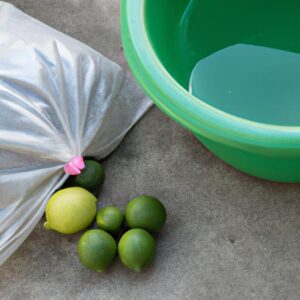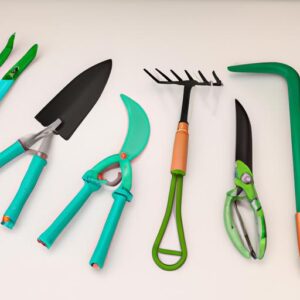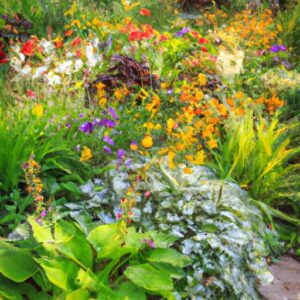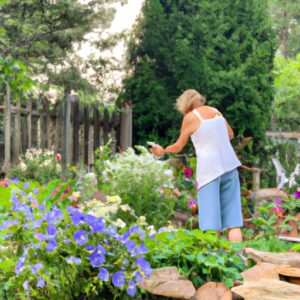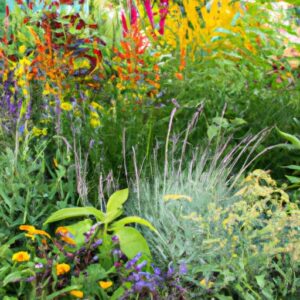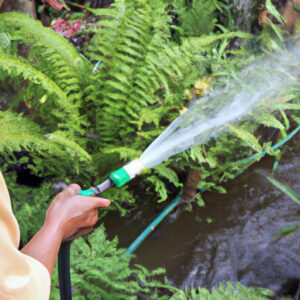Introduction
Gardening is not just a hobby; it’s a therapeutic experience that connects us to nature and allows us to create beauty right at our doorstep. But the question remains, when is the best time to start gardening? In this article, we’ll explore the ideal timing and various factors to consider when embarking on your gardening journey. So grab your trowel and let’s dig in!
A. Importance of Gardening
Gardening goes beyond mere aesthetics. It is an essential activity that promotes physical and mental well-being. The act of nurturing plants and watching them flourish brings a sense of accomplishment and joy. Gardening also allows us to reconnect with the natural world, providing a much-needed respite from our fast-paced lifestyles.
B. Benefits of Gardening
-
Physical Fitness: Gardening is a fantastic way to stay active and burn calories. Digging, planting, and weeding are all excellent forms of exercise that engage various muscle groups. Spending time outdoors also allows us to soak up some much-needed vitamin D from the sun.
-
Mental Well-being: Gardening has a profound impact on our mental health. Scientific studies have shown that it reduces stress, anxiety, and depression. The act of nurturing plants and being surrounded by nature has a calming effect, promoting mindfulness and improving overall mental well-being.
-
Homegrown Goodness: What can be more satisfying than harvesting your own fresh produce? Gardening empowers us to grow our own fruits, vegetables, and herbs, ensuring that we have access to organic, nutrient-rich food right from our backyard.
-
Environmental Impact: By cultivating a garden, we contribute positively to the environment. Plants help remove pollutants from the air, reduce soil erosion, and provide habitats for various beneficial insects and wildlife. Additionally, growing our own food reduces our carbon footprint by minimizing the need for transportation and packaging.
Gardening is a rewarding and enriching activity that offers numerous benefits to both our physical and mental well-being. Now that we understand its importance, let’s explore the optimal time to start gardening based on different factors.
The Best Time to Start Gardening
A. Factors to Consider When Starting a Garden
Before diving into the world of gardening, it’s crucial to consider a few factors that will impact the success of your garden. Here are some key aspects to keep in mind:
-
Location: Assess the available space in your home or yard where you plan to set up your garden. Consider factors such as sunlight exposure, soil quality, and accessibility for maintenance.
-
Time Commitment: Gardening requires time and dedication. Evaluate how much time you can devote to your garden on a regular basis. Different plants have varying care needs, so choose plants that align with your schedule.
-
Budget: Determine your budget for gardening supplies, tools, and plants. Gardening can be as affordable or as lavish as you make it, so plan accordingly.
B. Climate and Seasonal Variations
Understanding your climate and seasonal variations is vital when determining the best time to start gardening. Different plants thrive in different weather conditions. Consider the following:
-
Frost Dates: Frost can damage or kill tender plants. Determine the average last frost date in your area in the spring and the first frost date in the fall. These dates will help you plan when to start seeds indoors or directly sow them in the ground.
-
Hardiness Zone: Familiarize yourself with the USDA Hardiness Zone map, which divides regions based on their average minimum winter temperatures. This information will guide you in selecting plants that are suitable for your specific zone.
-
Planting Seasons: Research the recommended planting seasons for various crops in your region. Certain plants, like tomatoes and peppers, thrive in warm weather and should be planted after the danger of frost has passed. Others, such as cool-season vegetables like lettuce and broccoli, can tolerate lower temperatures and can be planted earlier in the year.
C. Understanding Your Local Weather Patterns
Aside from frost dates and hardiness zones, it’s essential to understand the weather patterns specific to your local area. Factors such as rainfall, humidity, and temperature fluctuations can greatly impact plant growth. Keep track of your local weather forecast and make note of any extreme conditions that may affect your garden.
By considering these factors, understanding your climate, and observing local weather patterns, you’ll be well-equipped to determine the best time to start gardening. In the following sections, we’ll explore gardening by season, providing insights into the pros and cons of each.
Gardening by Season
A. Spring Gardening: Pros and Cons
Spring is a season of renewal and growth, making it an ideal time to start your gardening endeavors. Here are some pros and cons to consider:
-
Pros:
- Optimal Growing Conditions: Spring offers moderate temperatures and increased sunlight, providing the perfect conditions for plants to thrive.
- Vibrant Blooms: Spring is known for its colorful blooms, with flowers like tulips, daffodils, and cherry blossoms painting the landscape with beauty.
- Abundant Plant Selection: Nurseries and garden centers stock a wide variety of plants during spring, allowing you to choose from an extensive selection for your garden.
-
Cons:
- Unpredictable Weather: Spring weather can be erratic, with sudden temperature fluctuations and unexpected frosts that may harm tender plants.
- Pest and Disease Pressure: Springtime brings an increase in pests and diseases, requiring vigilant monitoring and proper preventive measures.
B. Summer Gardening: Pros and Cons
Summer is a season of warmth and sunshine, presenting its own set of advantages and challenges for gardeners. Consider the following pros and cons:
-
Pros:
- Longer Days: With longer daylight hours, your plants will have ample time to photosynthesize and grow.
- Abundant Harvest: Summer is the time for bountiful harvests, as many fruits and vegetables ripen during this season.
- Opportunity for Outdoor Enjoyment: The pleasant weather allows for more time spent outdoors, enjoying the fruits of your labor in a lush, thriving garden.
-
Cons:
- High Temperatures: Excessive heat can be detrimental to plants, leading to wilting, sunburn, and dehydration. Proper watering and shade provision are crucial.
- Watering Challenges: Summer often brings dry spells and water restrictions, making it essential to implement efficient watering strategies to ensure plants receive adequate hydration.
C. Fall Gardening: Pros and Cons
Fall is a season of transition, signaling the end of summer and the preparation for winter. Consider the following pros and cons of fall gardening:
-
Pros:
- Mild Temperatures: Fall’s cooler temperatures create an ideal environment for many cool-season crops like lettuce, kale, and carrots.
- Less Pest Pressure: As pests start to diminish with the approaching winter, fall gardening offers a reprieve from battling insects and diseases.
- Opportunity for Second Plantings: Fall allows for a second round of planting, extending the harvest season and maximizing your garden’s productivity.
-
Cons:
- Shorter Daylight Hours: With the days gradually becoming shorter, plants have less time to photosynthesize and grow. Consider selecting varieties with shorter maturation times.
- Frost Risk: Towards the end of fall, the risk of frost increases. Be prepared to protect delicate plants with frost covers or bring them indoors.
D. Winter Gardening: Pros and Cons
Winter gardening might seem challenging, but it offers unique opportunities to grow certain crops and enjoy the beauty of hardy plants. Consider the following pros and cons:
-
Pros:
- Cool-Season Crops: Winter is perfect for growing cold-tolerant vegetables like cabbage, kale, and Brussels sprouts. These crops thrive in cooler temperatures.
- Less Pest Pressure: Many pests hibernate or become less active during winter, reducing the need for pest management.
- Enjoying Winter Beauty: Winter gardens can showcase the beauty of hardy plants, with their frost-covered leaves and unique textures.
-
Cons:
- Limited Plant Selection: The number of plants suitable for winter gardening is limited compared to other seasons. Research and choose the right crops for your region’s winter conditions.
- Cold and Frost: Freezing temperatures and frost can damage or kill delicate plants. Consider using protective covers or bringing potted plants indoors.
Gardening in different seasons offers its own set of advantages and challenges. Understanding the pros and cons of each season will help you plan and make the most of your gardening journey.
Gardening for Beginners
Assessing Your Space and Resources
Before diving into the world of gardening, it’s crucial to assess your available space and resources. Take a good look at your backyard, balcony, or even indoor areas to determine the size and layout of your potential garden. Consider factors such as sunlight exposure, soil quality, and drainage. Understanding these aspects will help you plan and optimize your gardening efforts.
Choosing the Right Plants for Beginners
As a beginner gardener, it’s essential to start with plants that are relatively easy to grow and maintain. Opt for resilient varieties that can withstand common gardening mistakes and adapt to different conditions. Some popular choices for beginners include herbs like basil and mint, salad greens like lettuce and spinach, and flowers like marigolds and pansies. These plants are forgiving and provide a great foundation for your gardening journey.
Basic Gardening Tools and Equipment
To embark on your gardening adventure, you’ll need a few essential tools and equipment. Here’s a list of the basic items that every beginner gardener should have:
-
Hand Trowel: This small, handheld tool is perfect for digging small holes, transplanting seedlings, and loosening soil.
-
Pruning Shears: These sharp scissors-like tools are used for cutting and trimming plants, removing dead leaves, and maintaining the overall health of your garden.
-
Garden Gloves: Protect your hands from thorns, splinters, and dirt with a sturdy pair of gardening gloves. They offer both comfort and safety while working in the garden.
-
Watering Can or Hose: Proper hydration is key to plant growth. Invest in a watering can or hose to ensure your plants receive the right amount of water at appropriate intervals.
-
Garden Fork or Rake: These tools are essential for loosening and aerating the soil, removing weeds, and leveling the ground.
Remember, as your gardening skills and passion grow, you can gradually expand your collection of tools and equipment. But for now, these basic essentials will help you get started on your gardening journey without breaking the bank.
Gardening for beginners is an exciting and rewarding experience. By assessing your space, choosing beginner-friendly plants, and acquiring basic gardening tools, you’ll be well on your way to creating a thriving garden. So, let’s roll up our sleeves and get our hands dirty!
Starting an Indoor Garden
Indoor gardening is a fantastic option for those who have limited outdoor space or live in areas with harsh climates. Transforming your home into a green oasis not only adds a touch of nature but also brings numerous benefits. Let’s delve into the world of indoor gardening and discover how to get started.
A. Benefits of Indoor Gardening
-
Year-round Gardening: One of the significant advantages of indoor gardening is that it allows you to grow plants all year long, irrespective of the season. By creating a controlled environment indoors, you can enjoy fresh greenery and blooms regardless of the weather outside.
-
Improved Air Quality: Indoor plants act as natural air purifiers by absorbing carbon dioxide and releasing oxygen. They also filter out harmful toxins, such as formaldehyde and benzene, commonly found in household products. Cleaner air promotes better respiratory health and enhances overall well-being.
-
Enhanced Mood and Productivity: The presence of plants indoors has been proven to boost mood, reduce stress levels, and increase productivity. The vibrant colors and soothing greenery create a calming ambiance, fostering a positive and relaxing atmosphere within your living space.
B. Choosing Suitable Plants for Indoor Gardening
When selecting plants for your indoor garden, it’s crucial to consider their adaptability to the indoor environment. Some plants thrive indoors due to their ability to tolerate low light conditions and adapt to limited space. Here are a few popular choices:
-
Snake Plant (Sansevieria): Known for its resilience and air-purifying properties, the snake plant thrives in low light conditions, making it an ideal choice for beginners.
-
Pothos (Epipremnum aureum): With its trailing vines and heart-shaped leaves, pothos is a versatile plant that can tolerate various light conditions. It adds a touch of elegance to any room.
-
Spider Plant (Chlorophytum comosum): This hardy plant is known for its air-purifying abilities and produces cascading green foliage, adding a touch of drama to your indoor garden.
C. Indoor Gardening Tips and Techniques
-
Lighting: Place your indoor plants near windows that receive indirect sunlight. If natural light is limited, consider using artificial grow lights to provide the necessary light spectrum for optimal plant growth.
-
Watering: Ensure you water your indoor plants appropriately, considering their specific needs. Overwatering can lead to root rot, while underwatering can cause wilting and stunted growth. Find the right balance and avoid waterlogged soil.
-
Humidity and Temperature: Different plants have varying humidity and temperature requirements. Research the specific needs of your plants to create the ideal microclimate by using humidifiers, pebble trays, or misting.
Indoor gardening is a wonderful way to bring nature indoors and reap the benefits of gardening regardless of the outdoor conditions. With careful plant selection and proper care, you can create a beautiful and thriving indoor garden that adds life and tranquility to your home.
Conclusion
In conclusion, the question of when to start gardening is subjective and depends on various factors such as climate, seasonal variations, and personal preferences. Regardless of the time of year, the important thing is to take that first step and start cultivating your green oasis.
Gardening offers a multitude of benefits, from promoting physical fitness and mental well-being to providing fresh, homegrown produce and making a positive impact on the environment. Whether you have a spacious backyard or a small balcony, there is always room for a garden.
Remember, gardening is not just about the end result, but also about the journey. Embrace the learning process, experiment with different plants, and adapt to the challenges that come your way. Gardening allows us to foster a deeper connection with nature and find solace amidst the chaos of daily life.
So, when should you start gardening? The answer is simple: now! Don’t wait for the perfect moment or the ideal season. Start today, and let the seeds of your garden flourish into a beautiful testament to your love for nature and the joy of cultivation.
As the saying goes, “The best time to plant a tree was 20 years ago. The second best time is now.” So, grab your gardening tools, get your hands dirty, and embark on this fulfilling journey. Happy gardening!
Remember, the best time to start gardening is now. Don’t hesitate, embrace the wonders of nature and experience the countless benefits that gardening brings. Start your journey today and witness the magic of watching your garden bloom and thrive. So, what are you waiting for? Let’s get gardening!
